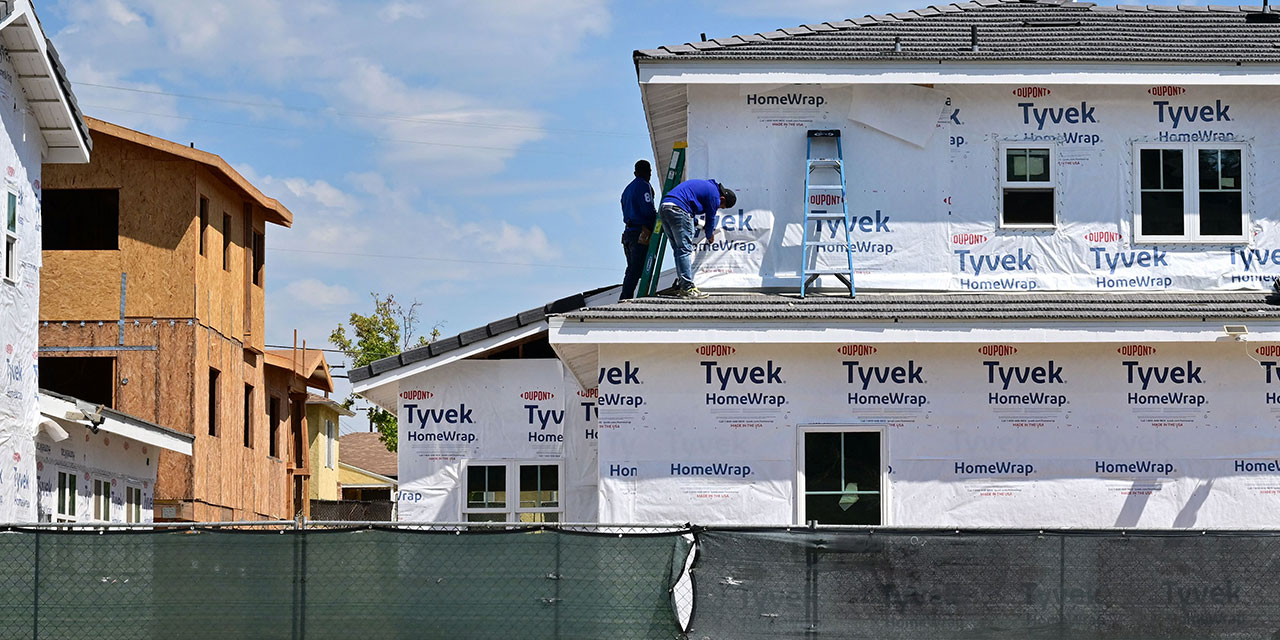Amid this year’s hard-fought battle over a handful of New York suburban congressional seats, Republicans and Democrats agree on at least one policy priority: removing the $10,000 cap on state and local tax deductions, or SALT, which then-President Donald Trump signed into law as part of the Tax Cuts and Jobs Act (TCJA) of 2017. In a U-Turn on his own past policy, Trump says he agrees, too. “I’m going to restore SALT,” the former president told a cheering throng at a September 18 campaign rally at Long Island’s Nassau County Coliseum.
With most of the TCJA due to expire at the end of 2025, the fate of SALT and other major provisions of the law will be a front-burner issue for the next administration, no matter who wins. As always, tax law changes must originate in the House of Representatives, where Republicans now hold the majority by a slim margin that they owe in part to New York suburban seats.
Finally, a reason to check your email.
Sign up for our free newsletter today.
Long Island encompasses two of the four congressional districts whose flip from Democrat to Republican in 2022 helped give the GOP a House majority of just nine seats (cut by one after the 2023 expulsion of George Santos). The two other districts are just north of New York City in the lower- and mid-Hudson Valley. Pollsters rate all three of New York’s currently Republican-held suburban seats as tossups, with control of the House itself also considered too close to call (if slightly Democratic-leaning) a month before the election.
Trump’s turnabout on SALT doesn’t alter the presidential election calculus: Kamala Harris remains a lock to sweep New York’s electoral votes along with those of other states with historically high SALT deductions, including California, New Jersey, and Connecticut.
But that wasn’t the point of the former president’s Long Island rally. Politico reported that Trump's “surprising reversal” on the SALT issue had followed “personal lobbying from at least three endangered GOP lawmakers” and that “vulnerable GOP members in . . . blue-state battleground districts plan to use Trump’s commitment to win over swing voters.”
Given the years they’ve devoted to hammering Trump over SALT, New York Democrats were understandably annoyed. Governor Kathy Hochul summed up their reaction in a post on X: “Trump and House Republicans were the ones who capped SALT deductions—taking billions of dollars out of the pockets of hard-working families throughout our state. New Yorkers see right through the BS. Trump has done enough damage already.”
Speaking of BS: the damage supposedly done by the SALT cap has been grossly misrepresented by New York politicians in both parties.
The cap did not “take billions of dollars out of the pockets of hard-working families”—not when combined with other 2017 tax law provisions that put billions of dollars back into most of the same pockets. Nor, as asserted by Hochul’s predecessor Andrew Cuomo, has the SALT limit “effectively raise[d] middle-class and working families’ property tax 20 to 25 percent all across the state.”
In fact, federal individual income taxes on New York residents dropped by $3.4 billion the first year under the new tax law, according to the Internal Revenue Service. New Yorkers in nine of the ten income ranges reported in IRS data paid lower federal income taxes as a share of income in 2018 than they had the year before. The exception: filers with incomes starting at $1 million, whose tax bite was slightly larger.
New York pols who’ve devoted years to pounding SALT have ignored the tax-cutting TCJA provisions the cap helped pay for, including rate reductions in middle-income tax brackets and a doubling of the standard deduction, which simplified tax filing by ending the need to itemize.
The TCJA got rid of personal exemptions, but more than made up for that change by doubling, to $2,000 from $1,000, the child tax credit, which is more valuable than an exemption because it represents an outright subtraction from taxes. The law also made that credit fully available to families with incomes as high as $400,000. The phase-out range previously started at $110,000, which reduced its value to many in the six-figure middle class of high-taxed suburbs.
The 2017 law also scaled back dramatically the impact of the Alternative Minimum Tax (AMT), which fully disallowed any SALT deductions and thus disproportionately affected Empire State residents. In 2017, nearly a half-million New York filers earning between $100,000 and $500,000 made AMT payments totaling $2.8 billion, in addition to their regularly calculated income tax. In 2018, that number dwindled to just 12,680 filers, whose added AMT payments came to less than $100 million. Based on his publicly released 2018 tax return, Governor Cuomo himself was among those pocketing a tax savings thanks to the AMT change.
The net impact on New Yorkers of all the TCJA provisions, including the much-maligned SALT cap, was a slight cut in the overall burden and a redistribution of that burden among different types of households. In New York’s downstate suburbs, families with children under 17 typically saw their federal income taxes at least slightly reduced, while childless households and empty-nest homeowners more often experienced a tax hike.
In New York, the SALT cap’s negative impact fell most heavily on households earning gross incomes over $1 million; their SALT deductions had averaged $534,000 before 2018. With the Empire State already depending on the top 1 percent to generate nearly half its personal income tax revenue, Cuomo began warning in 2017 that the SALT cap would undermine the tax base. But in 2021, in what turned out to be his last budget, he made the situation worse by approving one of the largest single personal income-tax rate hikes in the state’s history.
New York’s top rate, which formerly maxed out at 6.85 percent, and 8.97 percent under a temporary “millionaire tax,” now reaches as high as 10.9 percent on incomes over $25 million. New York City adds its own 3.88 percent to the state levy. The combined state and city marginal rate of nearly 15 percent is the nation’s highest, nearly double the 2017 level net of federal deductibility. IRS data showed that New York’s share of the nation’s income millionaires was dropping prior to enactment of the TCJA. This decline has only accelerated since the law took effect, with an extra push during the pandemic.
However, Albany also has found a way to relieve the SALT cap impact on a chunk of its high earners. In the wake of the TCJA, New York was one of 36 states to enact its own SALT cap “workaround” via a new state-level tax on business entities whose profits get passed through to owners.
It works like this: the state’s Subchapter S firms and partnerships (such as limited liability companies) can opt to pay a Pass-Through Entity Tax, or PTET, imposed on the firm’s total income at rates matching those in the state personal income tax. Owners and partners in these firms can claim a dollar-for-dollar credit for their share of the PTET, which is fully deductible on the entity’s federal business tax return. The SALT break is, in effect, fully restored—for pass-through business income, at least.
In fiscal year 2024, 92,266 New York firms opted into the PTET, with eligible owners and shareholders claiming $14 billion in state credits for their share of federally deductible PTET payments. This comes at no net cost to the state treasury, but the gambit effectively reduces federal revenues by $3 billion to $4 billion.
For budgeting purposes, Governor Hochul’s state financial plan assumes the entire TCJA, including the SALT cap, will expire as scheduled in 2025. But whatever changes get made to the tax law next year, it’s hard to see any combination of Democratic or Republican congressional majorities resurrecting the SALT deduction as it stood before 2018. If Republicans win a November sweep, their highest priority will be to preserve the TCJA’s major tax-cutting provisions. This won’t be easy in the face of a record federal deficit, not to mention Trump’s proposals to exempt incomes from tips, overtime, and Social Security.
Kamala Harris hasn’t taken a position on SALT but has pledged not to raise taxes on incomes below $400,000, which would require extending all the TCJA provisions benefitting filers below the top bracket. Harris also has proposed significant tax hikes on higher incomes and capital gains, which would make New York and other high-tax states even less attractive as domiciles for upper-income investors.
Given all the factors at play, the best bet is that neither party will seek to restore the SALT cap fully. At most, Congressional Democrats and Republicans seem more likely merely to raise the SALT deduction limit in a manner targeted to help the “hard working families” who figure prominently in their rhetoric—perhaps doubling it to $20,000, as called for in one proposal.
Given all the vapid political posturing around SALT since 2017, New York misses more than ever the insights of the late Senator Daniel P. Moynihan. A fierce defender of the SALT deduction when it came under fire during Reagan-era tax reform debates, Moynihan sponsored and popularized an annual report showing the extent to which New York generated more federal revenue than it got back in the form of direct federal spending.
His analysis was open to criticism; for example, it could be argued that, via the trade in Treasury securities, the nation’s financial capital benefits from persistent federal deficits, not to mention the incalculable value to Wall Street of financial markets protected and regulated by federal law. But Moynihan was also a realist—and intellectually honest. New York’s flow of funds imbalance, he acknowledged, was an inevitable product of the steeply progressive and income-redistributing tax code that he and his fellow liberal Democrats favored. Taxing higher incomes at higher rates inevitably meant that New York, foremost among high-income states, would always pay more than it got in return. As his tenure wound down in 1999, Moynihan proposed a grand fiscal compromise: “Less activism in Washington in return for more revenue at home, for whatever active measures recommend themselves to the state or municipality in question.”
Unfortunately, that vision seems further than ever from being realized—no matter who wins the election.
Photo: AlxeyPnferov / iStock / Getty Images Plus




